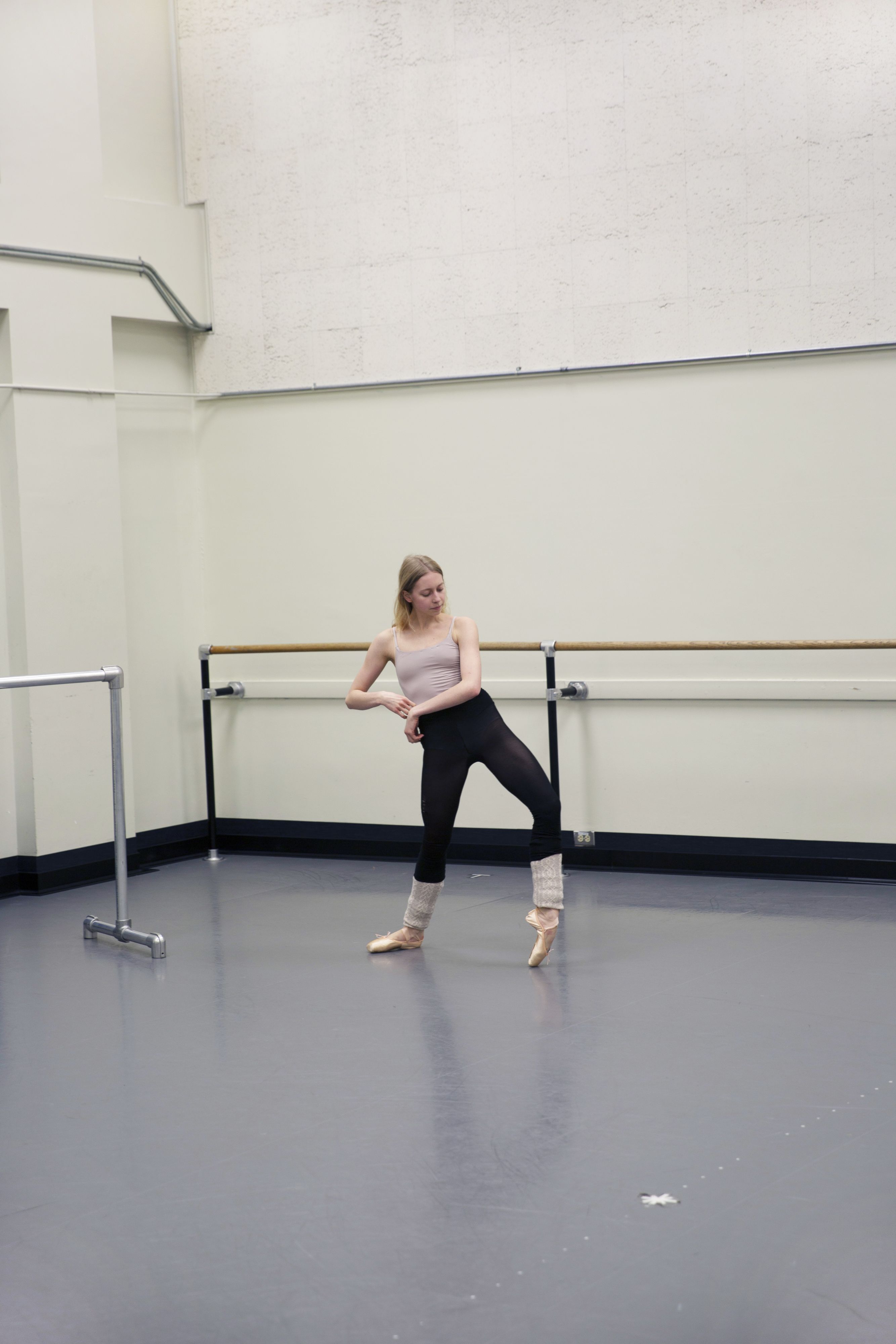
Reflections on 'Faun'
A Conversation between Dominika Afanasenkov and Sterling Hyltin
, April 10, 2023
With the addition of a barre, canvas floor, and practice clothes, Jerome Robbins’ Afternoon of a Faun transforms the stage into a rehearsal studio for its taut, richly textured 11 minutes. Two students encounter one another and dance sometimes together, sometimes apart to the lush Debussy score, performing for themselves and each other in what is suggested to be a private moment. The audience serves as the mirrored wall; when the dancers gaze out into the rings, it is as though they are studying and admiring themselves in an otherwise empty room. As Repertory Director Craig Hall says, “The audience is looking in on something they shouldn’t be seeing.”
Part of a dancer’s preparation for taking on a new role in the repertory is a thousand of these private moments, from rehearsing footwork, to watching and thinking through a performance, and from receiving feedback from coaches and repertory directors, to the mentorship provided by their fellow dancers. Corps de Ballet Member Dominika Afanasenkov has begun this process with the role of the Nymph in Afternoon of a Faun, created in 1953 on Tanaquil Le Clercq, in which she will debut this spring. We were lucky enough to listen in on part of her preparations: a conversation with former Principal Dancer Sterling Hyltin, who performed the same role many times in her career with the Company.
STERLING HYLTIN: I think Afternoon of a Faun is the only ballet where I remember exactly the moment and where I was when I saw my name on the schedule to learn it for the first time. We were [on tour] at the Kennedy Center, and it was the very last day, so we were going right back into rehearsal period for our spring season when we got back to the city. I don't remember if I had just gotten off stage or what, but I was like, “Oh, I'm waiting for the elevator. I'll check the schedule for Tuesday,” and there was Afternoon of a Faun with my name. I remember feeling so surprised and honored and very excited—all those good feelings.
I always rehearsed it with [Repertory Director] Jean-Pierre Frohlich, who taught it to me. He's such a wonderful coach. He's extremely thorough and detail-oriented. My first “Faun” was [former Principal Dancer] Robert Fairchild, who I danced with very often, so we had that connection already—that was not something we were worried about.
It's a ballet you want to rehearse almost as much as you would a full-length ballet, because it requires such sensitivity and such awareness. You want to rehearse it enough to learn how to fight distraction. You have to be so in the moment, in the exact way you need to be. You're going to practice in a studio you think is empty. You really have to know exactly how high your chin is while you're rehearsing, facing a mirror, so that when you're onstage you can replicate it. It involves an awareness that no other piece in the repertory does.
The last time I performed Afternoon of a Faun was actually for Jacques d’Amboise’s memorial, and I performed it with [Corps de Ballet Member Christopher Grant, who will be partnering Dominika], so now you can pick up where I left off.
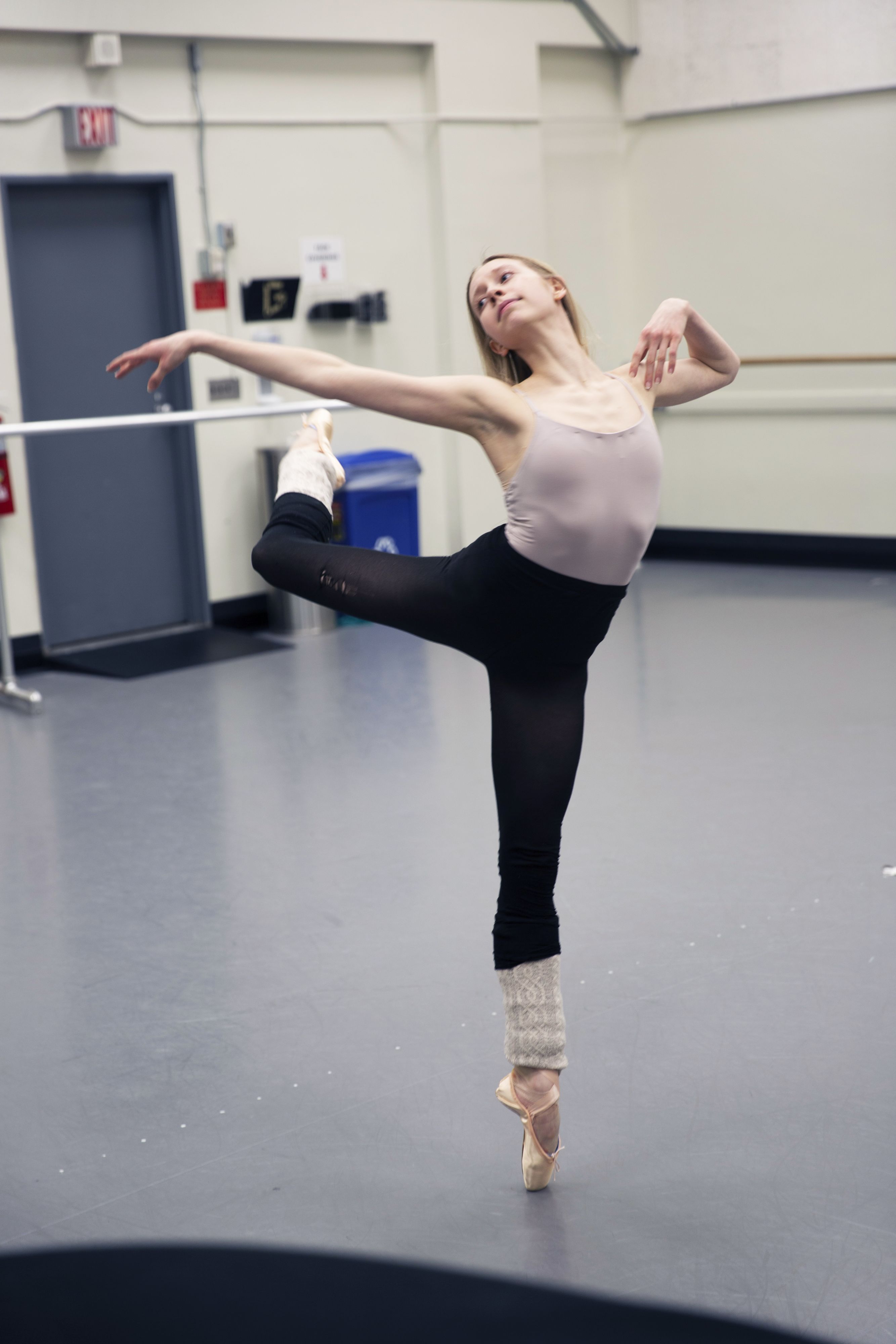
DOMINIKA AFANASENKOV: First of all, I can just sit and listen to Sterling talk about this. Faun was always a dream ballet. When I was a student, I would watch Sterling and [Principal Dancer] Unity Phelan perform it, and watch old tapes. The first year at the School [of American Ballet], there was a Jerome Robbins exhibition at the New York Public Library, and there was a video of Kay [Mazzo, former principal dancer] when she was 15 years old, dancing Afternoon of a Faun. That's when my love for it started. I thought it was such a beautiful ballet and it wasn't like any other I'd seen before.
I think it was mid-winter season, after a ballet class, and JP came up to me and asked me if I was available later in the day to rehearse something. He didn't tell me what it was. I was like, “Yeah, sure, I don't have too much going on before The Sleeping Beauty starts, so it's perfect timing.” I was confused about what it could be because it was the end of the season. A few days later, the schedule came out, and I had my first rehearsal. I was very surprised, I didn't know how to believe it; at the same time, it felt very right, in the way that I imagined it in my dreams, having a rehearsal for Afternoon of a Faun.
Seeing it in person, and actually going to the rehearsals, has been like stepping into a new world—being aware of what's happening, but at the same time being separated from it. Kind of like seeing it from a different perspective.
STERLING: I think as dancers, we're used to being in the studio, we're used to being exactly this, so it's about taking that compartmentalized moment—because it's different from a performance—and transferring it to an area of your professionalism that you don't normally place it. So many Robbins ballets are all about the community onstage, so you find yourself looking into the audience less. But then, all of a sudden, you have Faun, which is so human. In many ways, it's one of the most human of all his pieces, which seems a crazy thing to say, because they all invoke so much humanity. You're looking straight out at the audience, but you're addressing the fourth wall, and you can't break it. It’s so delicate, because it's just part of the scenery for you. I tried to rehearse it so often that when I was onstage, I was still seeing myself, even though there was no mirror there. That's the only way I felt that I could show that that was the mirror.
It's interesting that the moments when you actually look at your partner are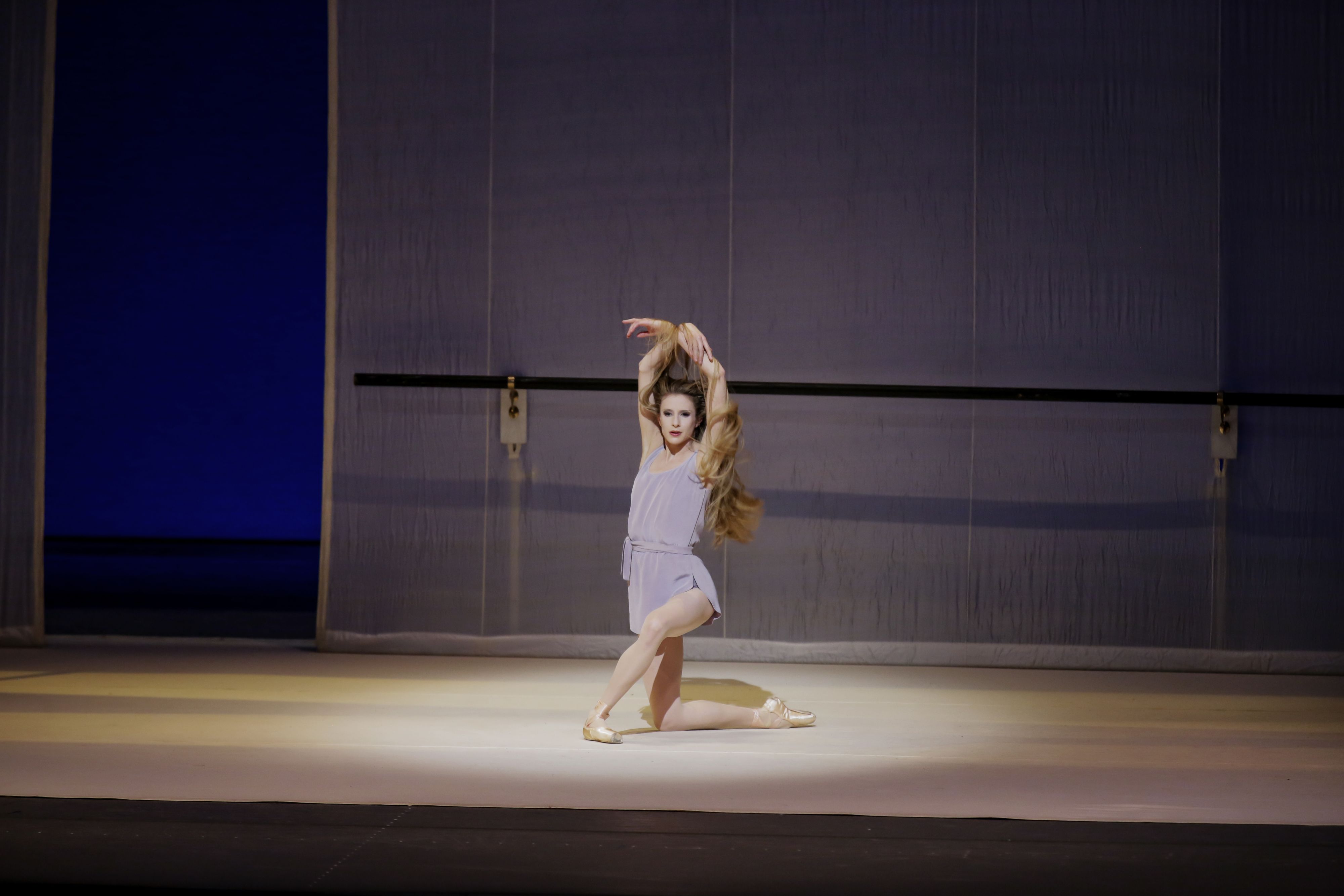 actually choreographed, every single detail, even down to when you make eye contact. That makes it seem like you're in this tight box, but you're not, because you're yourself and you're experiencing something you can completely imagine happening. When that curtain goes down, you're in such a state of zen. It's almost like a meditation, dancing this ballet. And it just adds to the whole feel of the piece.
actually choreographed, every single detail, even down to when you make eye contact. That makes it seem like you're in this tight box, but you're not, because you're yourself and you're experiencing something you can completely imagine happening. When that curtain goes down, you're in such a state of zen. It's almost like a meditation, dancing this ballet. And it just adds to the whole feel of the piece.
DOMINIKA: I haven't had much experience yet because I’ve only had about three rehearsals, maybe four. Even during layoff, I was thinking about it. The one thing I've realized, for myself at least, is that there is a sort of story to the ballet, and there are words you can try to think of in your head for the movement. But I found that that doesn't really work, to go through the story in your head, using words; I realized that the movement and the story that you're trying to portray is really just the feelings, so it has to be true and it can't be played. You can't be going over the script in your head.
When I was going over it by myself, I needed a few moments to get into that place—to actually realize what I'm going to be doing. And then going into it, not having to think about the script, and just letting the emotions follow each other. Then the emotions rule your movement. Because it's a very natural progression, I would say, in the choreography. Every single thing follows the next in a very simple way. It makes sense in my body to do those movements, to convey those emotions. So that’s the one thing I’ve found out so far. I'm excited to find out more.
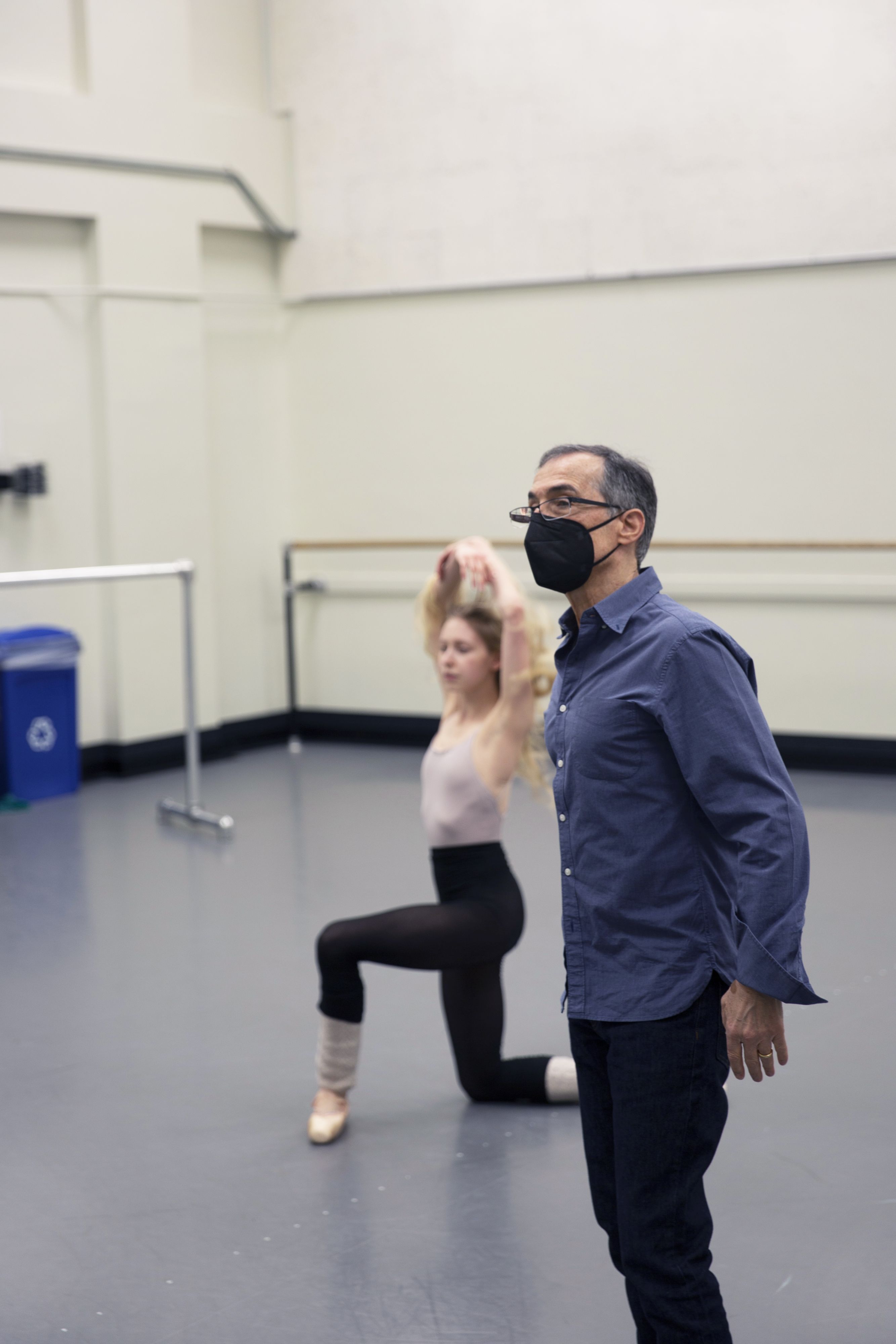 For me, Sterling and Unity dancing it, and all of these ballerinas that I look up to so much, and Darci [Kistler] and Kay, Suzanne Farrell, the list goes on and on… It's strange for me to think about because they're people I adore and look up to so much; it's crazy that I'm getting the opportunity to dance the ballets they have danced. They're all so different and special, and it’s such a personal ballet, that I feel very honored to have my own interpretation and to have my own story added to this wonderful line of dancers. I feel very honored to be one of the chosen ones for this ballet.
For me, Sterling and Unity dancing it, and all of these ballerinas that I look up to so much, and Darci [Kistler] and Kay, Suzanne Farrell, the list goes on and on… It's strange for me to think about because they're people I adore and look up to so much; it's crazy that I'm getting the opportunity to dance the ballets they have danced. They're all so different and special, and it’s such a personal ballet, that I feel very honored to have my own interpretation and to have my own story added to this wonderful line of dancers. I feel very honored to be one of the chosen ones for this ballet.
STERLING: In my career, I would have loved to have met Balanchine and Jerome Robbins, of course, but I always harbor this slightly even greater desire to have met Tanny [Tanaquil Le Clercq]. She seems so natural that it seems like she would want all of us to be really natural. And there's so much story to tell that I don't think there's room for a third person in that studio. You really need to be yourself in that moment, and bring yourself to it, and trust your own instincts, because that's what's going to read the most to the audience. You can always learn from watching certain moments, but ultimately just bringing yourself is the most effective thing you can do for the audience. And you're going to be so beautiful in it. I can't wait to come and watch you.
DOMINIKA: I love watching dance in general. When I was watching the tapes for Faun, some people would say, “It's hard to watch tapes, then you think of dancing it the same way as the person in the tape.” With Faun, I feel like that isn’t even an option, because every single tape was so different. It just reassured me that I can be myself, and I feel like that's the greatest gift—to be yourself onstage, to just dance and give, hopefully, a wonderful performance that brings something lovely to the audience’s life. That's what I would feel when I would come to the theater and watch New York City Ballet: I would always get so many new ideas and thoughts and emotions.
STERLING: The ballet has so many quiet moments, I found that it created some of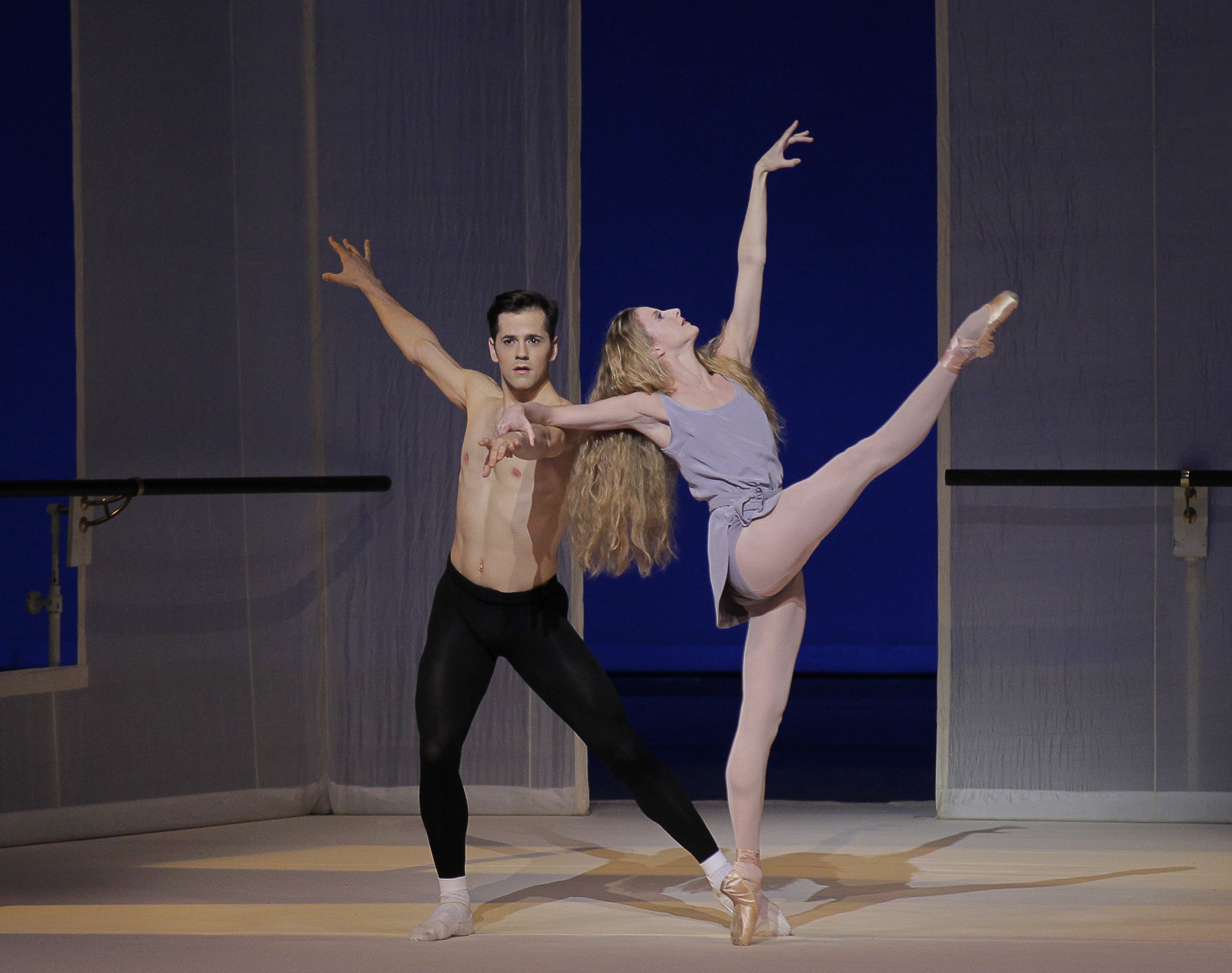 the most intimate and meaningful stage moments with my partner that I've ever had. You go through this really powerful, serene journey together in those few minutes. It's something that you share that not a lot of people get to share, because not a lot of people get to learn this precious ballet. There's a gratitude that you both feel that you're in this together, and that you're sharing in this moment that only involves a look. I think as humans outside of the dance world, we know how powerful just one look can be. To feel that onstage, with the music soaring and the wind from the theater blowing, is really powerful. You feel really sunlit. I think that's something really special about this ballet.
the most intimate and meaningful stage moments with my partner that I've ever had. You go through this really powerful, serene journey together in those few minutes. It's something that you share that not a lot of people get to share, because not a lot of people get to learn this precious ballet. There's a gratitude that you both feel that you're in this together, and that you're sharing in this moment that only involves a look. I think as humans outside of the dance world, we know how powerful just one look can be. To feel that onstage, with the music soaring and the wind from the theater blowing, is really powerful. You feel really sunlit. I think that's something really special about this ballet.
The only advice I have is just to be in the moment. Once your partner puts his hands on you for that first lift, it is a sensational feeling. It's like a little bit of ice gets broken, that tension gets broken, only to build back up again. Just enjoy it. The hardest part is feeling like you believe yourself in the beginning, when you don't notice him yet and you're introducing yourself to the scene for the audience. I always found that that was the hardest—to believe that I was really seeing myself and that I had my positions correctly as if I was staring into the mirror. After that, as soon as you see him and you have that tense walk to the barre, then it's just about you two, and you tell the story together. The rest was easy—you just get on the wave, and it takes you.
DOMINIKA: I'm looking forward to having more rehearsals and hopefully, Sterling watching a few and talking about it with me more. The ballet is so subtle, every single little detail can affect it in so many ways. It is just a look that can change so much. I'm getting the most information I can about the experiences people have had with it.
STERLING: Dominka, just be yourself, you'll be beautiful, and anything you do, you're always going to grow in it. It's going to feel different every season that you do it. And enjoy that. You're going to learn with each performance—that's one of the things to enjoy as you get older in the Company. I'm always happy to help you anytime. But I want you to be you most of all.
